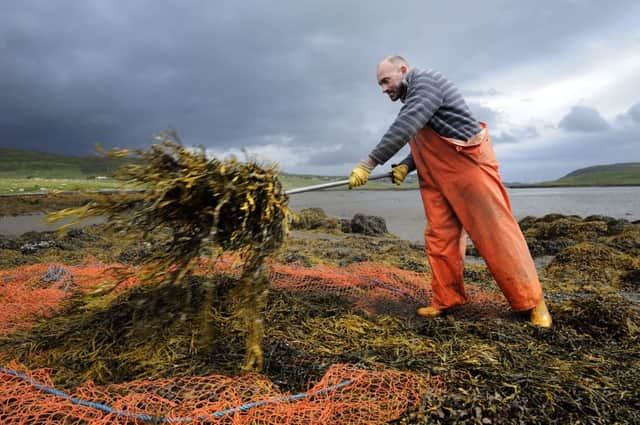Seaweed to be used to tackle radioactive sludge


Scientists at the Environmental Research Institute (ERI) in Thurso are also focusing their study on the potential use of crab shells, coffee grounds and spent distillery grain to remove the strontium from nuclear liquid waste.
They believe the physiochemical process of biosorption could be an alternative to the established industry solutions such as ion-exchange resins and zeolite supplements.
Advertisement
Hide AdAdvertisement
Hide AdThe technique has already been deployed to recover precious metals such as gold and metal and those that present environmental risks such as arsenic and mercury from liquid wastes.
Preparatory work is under way on the £170 million job to extract 1500 tonnes of noxious chemical and radioactive sludge from the 65-metre deep makeshift dump which was used between 1958 and 1977.
Site licence company DSRL has commissioned a Thurso-based research team to look into the potential of using some form of natural material to remove trace levels of strontium from the effluent. The radioactive form of the element has a short half-life and is particularly harmful due to its bone-seeking properties.
The team at the ERI – part of North Highland College UHI – have drawn up their short list of materials which they are now testing out on the removal of naturally occurring strontium from synthetic wastes. The results will be compared to the performance of a range of commercial products and processes currently used at Dounreay.
The laboratory studies will assess the effects of agitation rates, contact time, concentration, flow rates and pH.
Mile Gearhart, who is in charge of the clean-up of the shaft and the nearby waste silo, is looking forward to finding out the results of the work being carried out by ERI scientists.
He said: “We are pleased to be working with ERI to identify a sustainable solution that can be sourced locally.
“We still have a number of issues to address but results to date have been very promising.”
Advertisement
Hide AdAdvertisement
Hide AdIt is planned to present the results at next year’s 2016 European Chemistry Conference in Turin.
Further work at the ERI with biosorbents is to look at their potential for the removal of toxic metals and pharmaceutical residues from waste water and other liquid effluent. How Scottish companies are innovating through cloud computing